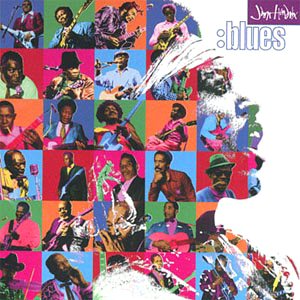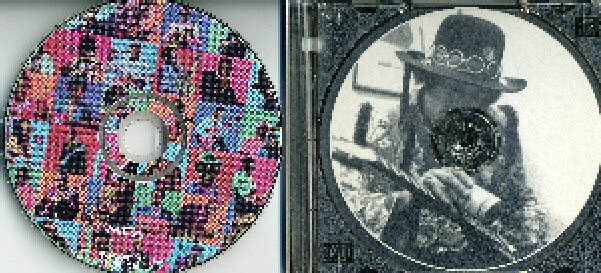"I
wish they'd had electric guitars in cotton
fields back in the good old days. A whole lot
of things would've been straightened out."
- Jimi Hendrix
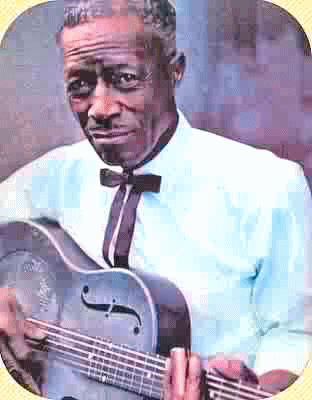
Son House
Son House was celebrating his 66th birthday in
Rochester on the day Hendrix came to play in '68.
House had moved here the year Jimi was born. Of
the trip into town Jimi wrote in his diary
"Stopped at a highway diner. I mean a
real one.
Like in the movies." There,
The Jimi Hendrix
Experience ran into Dick Waterman, manager
of Son House. "I went out into the car and they
were all bundled up," Waterman recalls, "it was
the dead of winter on the New York Thruway."
Jimi played Rochester on the first day of spring
and for years afterwards my friends and I observed
the anniversary by renting a National Steel from
the House of Guitars and dragging it over to the
Grieg St. house where Son House lived. Portraits
of JFK and Dr. King stared from the walls as Son's
bottleneck sermons raised Hell 'n' Brimstone. We'd
sit at his feet on tattered rugs and hear Delta
tales about Willie Brown, who also once lived in
town.
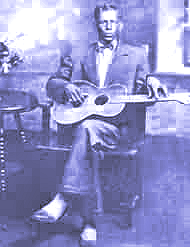
Charly
Patton
Blues were "born" with Son House in 1902. That
year the classic 12-bar song-form was first heard
by Jelly Roll Morton. This was the first known
sighting of blues. Blues was the lost chord which,
when found by a music publisher in 1903, became
the Song of the 20th Century. Prior to that
breakthrough, blues gestated on the Mississippi
Delta during the 1890s. Such a catchy progression
could circulate among folk for only so far before
a composer's trained ear took note, as was the
case with W. C. Handy in 1903. Picasso's "blue
period" was peaking when the blues were media
born. Blues appeared at the inception of the
electrical age, intersecting turn-of-the-century
revolutions from Einstein, Freud, Stravinsky, and
the Wright Bros.
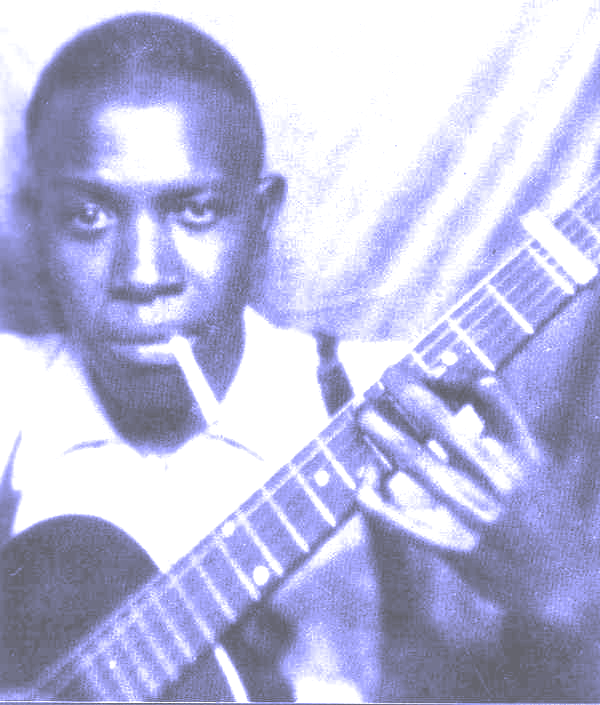
Robert
Johnson
On Valentines Day 1920, in the year when women
won the right to vote, Mamie Smith became the
first blues singer to record. Three years later
Sylvestor Weaver was the first country bluesman to
cut a disk. By the late '20s Son House was
learning to play from Delta players of the
pre-recorder age. Among the pillars of country
bluesmen, House stands with Charly Patton and
Robert Johnson as the original Trinity. One day in
Rochester I asked Son's opinion of Jimi. "Yeah,
he's alright!" was his decree.
"When I re-discovered Son in June of '64,"
recalls Waterman, "we talked about Robert Johnson,
and he was trying to recall Robert. Then his wife,
Evie, said, 'Oh Son, you know; Robert Dusty!'
And Son perked up and said, 'Oh, Robert Dusty!'
And then Son said, 'Man, he was always hanging
around with me and Willie Brown, wanting to sit-in
and do a song. We let him sit-in and he would up
and break a string, and where we gonna get a new
string late Saturday night, man? And we had to tie
that broken string together and tear up our
fingers! We didn't want him to play.'"
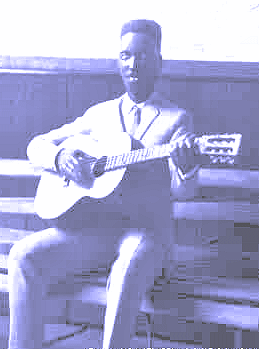
Tommy
Johnson
It was through the eyes of Son House that the
world had a window on the legend of Robert
Johnson. Son House and Willie Brown were the elder
teachers that teenage Robert approached before he
could play. House was the witness who saw Johnson
return transformed from the Crossroads. Peter
Welding was among the first to interview Son about
this. "Welding met Son House in October of '64 in
Chicago," states Dick Waterman. In a DownBeat
'66 article, Welding quoted House relating how
Robert Johnson had "sold his soul to the devil in
exchange for learning to play like that." Stories
about midnight pacts at a country Crossroads were
part of old Delta lore. Tommy Johnson (an
unrelated predecessor of Robert) was one of the
most influential early country bluesmen, and he
claimed that a pact with the devil at a country
crossroads was the source of his talent. The story
of how this happened was published in a 1971 book
(Tommy Johnson) by David Evans. Greil
Marcus' 1975 Mystery Train was the first
book to explore Robert Johnson's "devil pact" as
described by Son House, but it wasn't until Deep
Blues by Robert Palmer was published in 1980
that details of the Crossroads legend were
presented as part of Robert Johnson's legacy.
Through these books the old Delta tale became
known to the world.
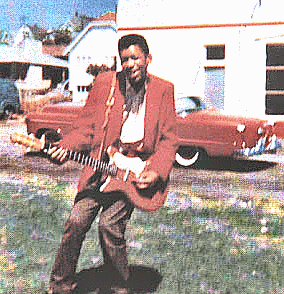
Robert Johnson recorded Crossroad Blues on
Nov. 27, 1936. On that day six years later Hendrix
was born. 1942 was the breakthrough year of Blues
Radio, that year the juke box business grew to a
$65 million industry. Blues music was at the
threshold of blanketing the nation, but the vinyl
industry was halted by war rationing. In 1942
Muddy Waters was about to leave Mississippi for
Chicago, Big Boy Crudup was about to front the
first drums/bass blues trio, and the image of
Robert Johnson at the Crossroads was about to be
echoed by Hendrix.
- James
Sedgwick]






